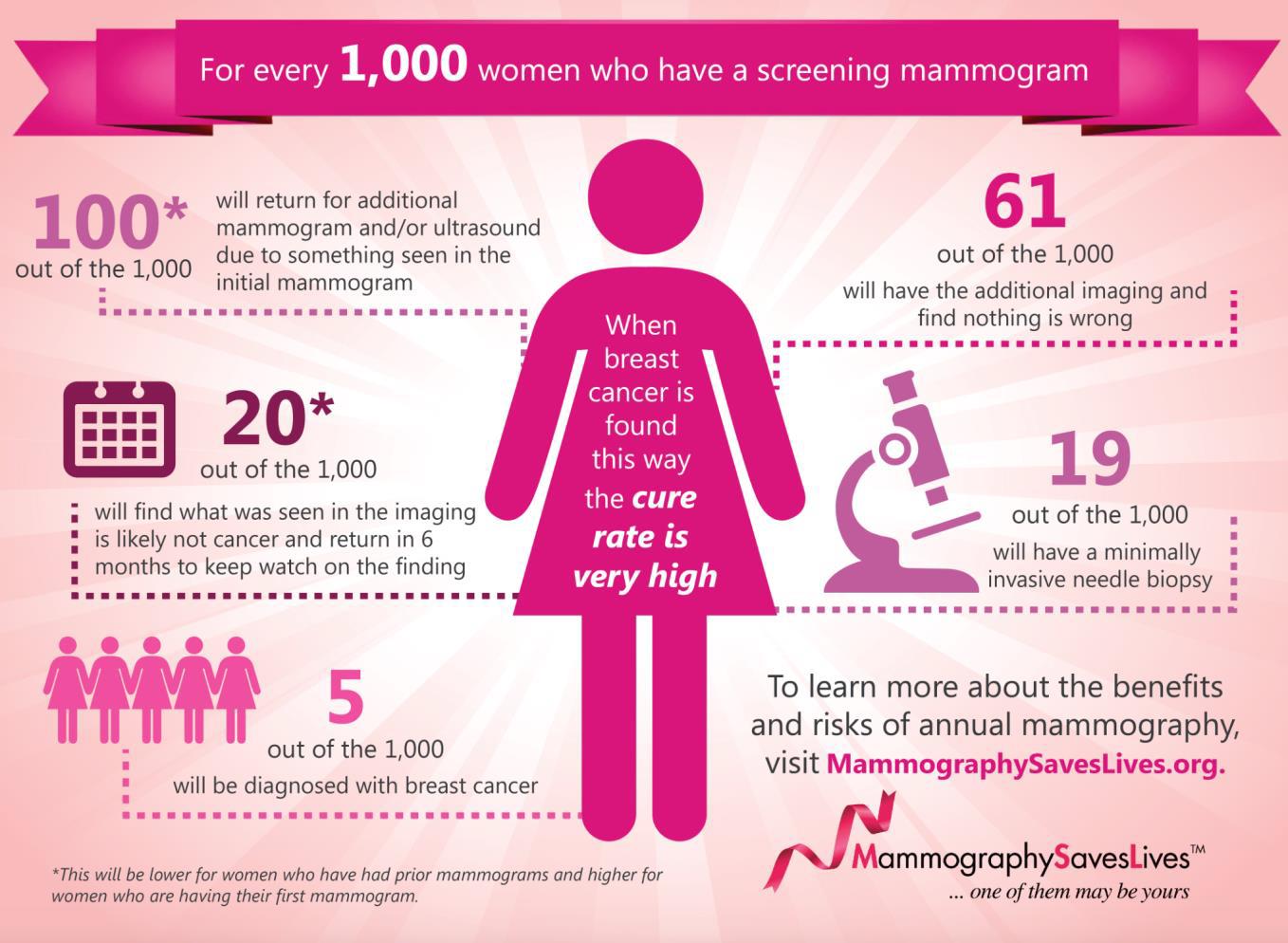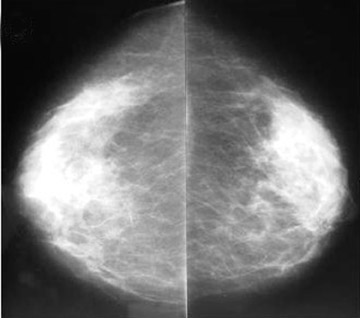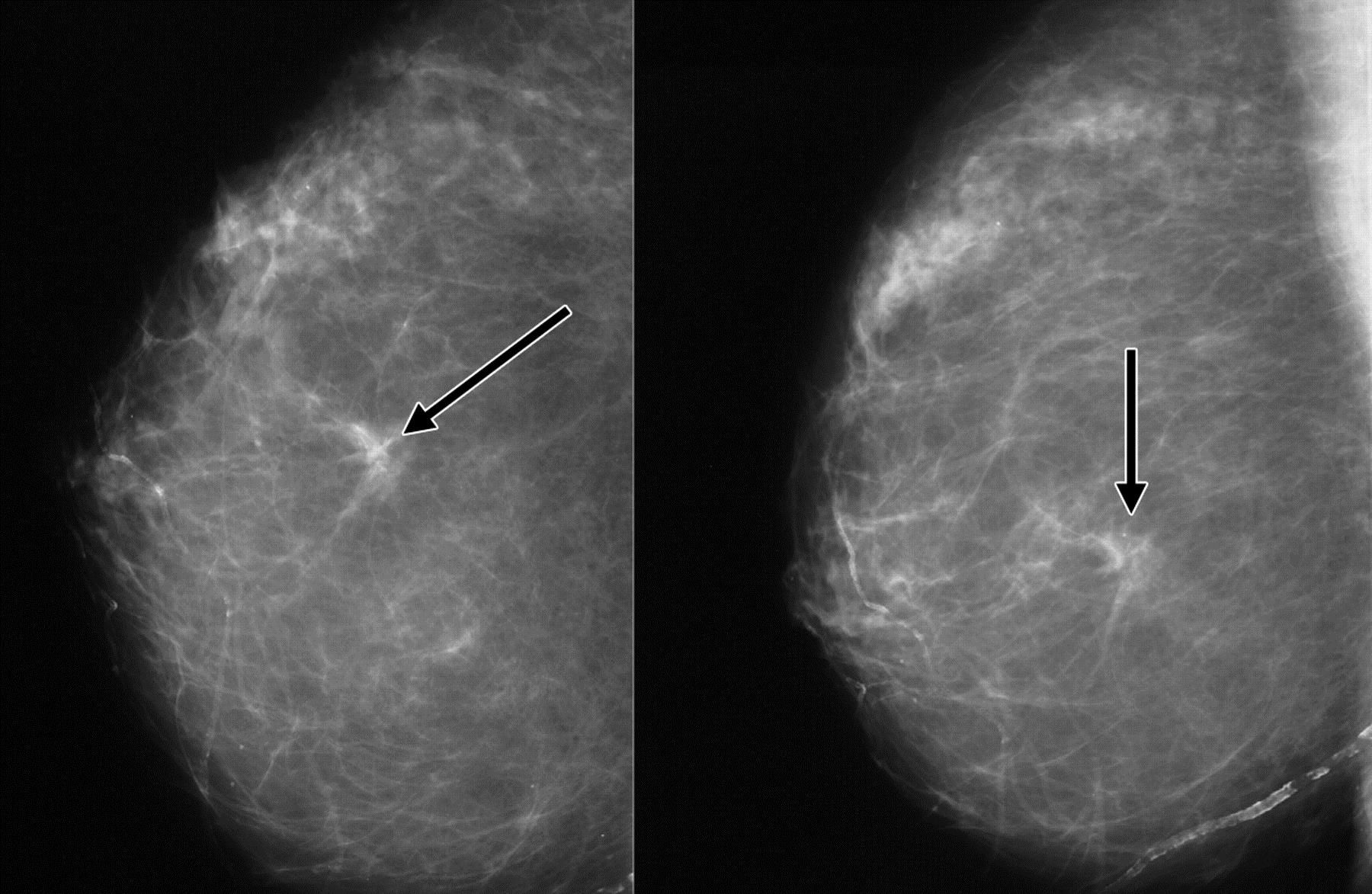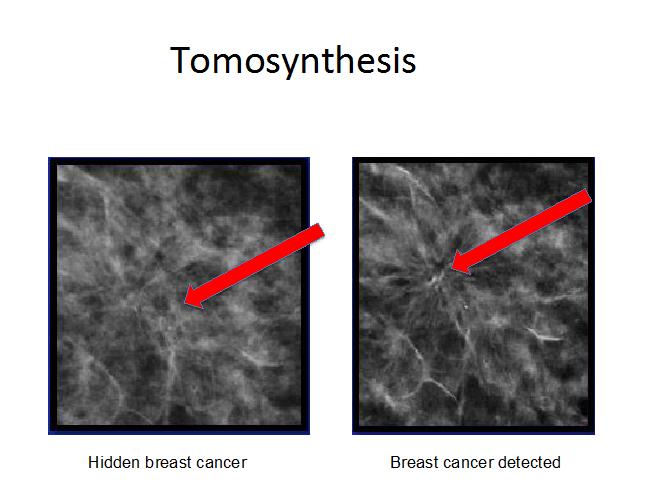
Here are 3 facts about Breast Cancer every woman needs to know.
# 1 Did you know that for every 1,000 women who have a screening mammogram that:

Let’s break it down: The vast majority of women who are screened will have reassuring results.
#2 Women with Increased Breast Density may need additional screening.
When breast tissue is dense, it appears white on a mammogram. Unfortunately, breast cancer also appears white, so in a traditional mammogram, trying to find a breast cancer can be like trying to find a snowflake in a snowstorm.

Very Dense Breast tissue. Can you spot the breast cancer?

The arrows point to a small breast cancer.
# 3 There are new and innovative ways to diagnose breast cancer than ever before.
- Conventional Mammography – We all know that mammography is still the best and first step in screening for breast cancer. Early detection means finding cancers early, which means higher cure rates. What surprises many women is that if something looks suspicious on a mammogram, we have more imaging options than ever before.
- 3-D Mammography known as Tomosynthesis - This screening technology, can help radiologists look at breast tissue via multiple thin layers without shadowing and distortions. This helps find suspicious areas that may be overlooked from conventional mammography.

3-D tomosynthesis: 2 images showing how breast cancer is not visible in the top layer, but becomes easier to see in the 2nd image which is slightly deeper.
- Whole Breast Ultrasound - An advanced screening tool that allows radiologists to look differently through dense breast tissue to screen for small breast cancers that might be obscured in a mammogram. I’ve had this procedure myself. It is painless, takes less than 10 minutes and has been a beneficial screening tool at El Camino Health for women with dense breast tissue.
- Breast MRI (Magnetic Resonance Imaging) - This diagnostic screening option is particularly helpful for women with a history of breast cancer, or those who have tested positive for the BRCA genetic mutations.
There are new Breast Imaging Options in development. Stay tuned for more information on PET scans and Gamma Molecular Imaging. In addition, clinical trials are underway that utilize wearable devices that track cell changes within the breast, detecting cancer at its earliest stage.
This article first appeared in the HealthPerks newsletter and was updated in December 2018 and was updated in August 2023.

